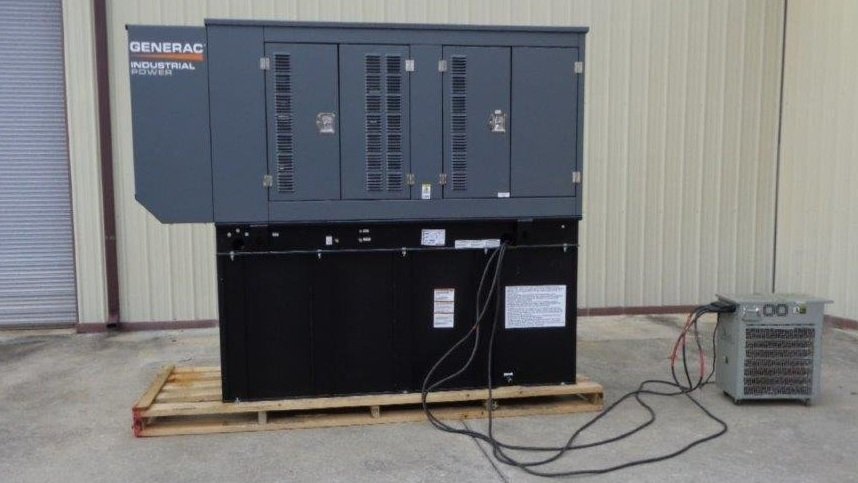Load Bank Testing
THE IMPORTANCE OF
LOAD BANK TESTING
Load bank testing of standby gensets is a preventive maintenance practice for an emergency power supply system (EPSS). The testing is primarily meant for diesel-powered gensets. The main purpose of this testing is to help ensure the genset's reliable operation during utility power failure. If this testing is performed regularly, it can extend the genset's life. J & T Service Center, Inc. has load banks on hand that will handle wet stacking, diagnostics, and troubleshooting.
If your Emergency Power Supply System (EPSS) contains a diesel-powered generator your equipment may develop a condition known as "wet stacking." Wet stacking occurs when unburned diesel fuel escapes the engine's cylinders during the combustion cycle and accumulates in the exhaust pipes. Fuel can escape the cylinders when the combustion temperature and pressure is not high enough to adequately expand the piston rings and make a complete seal. Unburned diesel fuel in the exhaust system then becomes a fire hazard. Thereafter, once the system is operated under adequate load the exhaust will heat to a temperature high enough to ignite the fuel that has accumulated in the exhaust pipe creating a potentially disastrous fire. To prevent this from happening, the generator must be regularly operated under enough load to increase the combustion temperature inside the cylinders to seal the piston rings and burn off any unburned fuel that may have accumulated in the exhaust.
HOW DO I KNOW IF I NEED
LOAD BANK TESTING?
If your life safety diesel-powered generator does not meet at least 30% of its nameplate kW rating load during your documented monthly building load tests, then your EPSS must be exercised once a year under artificial load.
Here are a few questions to help determine whether your equipment is in need of load banking:
Each month, during your regular operating cycle, does your Diesel-powered generator operate at 30% of its nameplate kW rating or greater?
If so, does the generator operate for at least 30 minutes at 30% or greater of its nameplate kW rating?
If yes, then you may not need to perform load bank testing. Ask one of our technicians to do a complete evaluation of your system to determine its operability and efficiency.
If no, then NFPA 110 states that you must exercise your emergency power system according to a prescribed method at least once per year.
If your system does not operate at 30% or greater of its nameplate kW rating for at least 30 minutes each month, then your Diesel-powered generator will need to be "Load Banked" and exercised under artificial load once per year.
LOAD BANK TESTING
HOW IT WORKS
The National Fire Protection Association (NFPA) prescribes when an EPSS is to be operated under sufficient loads, or through the use of a load bank, in its publication NFPA 110-Standard for Emergency and Standby Power Systems, 2005 Edition. After the load bank is attached to the generator, the generator must be run at 25% of nameplate rating for 30 minutes, followed by 50% of nameplate rating for 30 minutes, followed by 75% of nameplate rating for 60 minutes, for a total of 2 continuous hours. Exercising the equipment according to this schedule will simultaneously test the operating efficiency of the system and burn off any fuel that may have accumulated in the exhaust over the course of normal operating conditions.
We provide experienced technical support and trained personnel to oversee load bank testing. We supply the load bank, cables and an experienced test engineer who will conduct the test safely. The test engineer has the ability to assess the performance of the equipment throughout the test.
J & T Service Center, Inc. monitors critical engine parameters such as oil pressure, engine temperature or fuel pressure. We record these readings to ensure that once the unit reaches full-rated load, it runs at normal operating temperatures and pressures. We deliver a full report of the readings to show your equipment's activity including generator output readings such as voltage, amperage, KW amount, etc. Our written reports include any unusual occurrences, recommended remedial work, or suggested improvements. A quote for any recommended work is also included.


